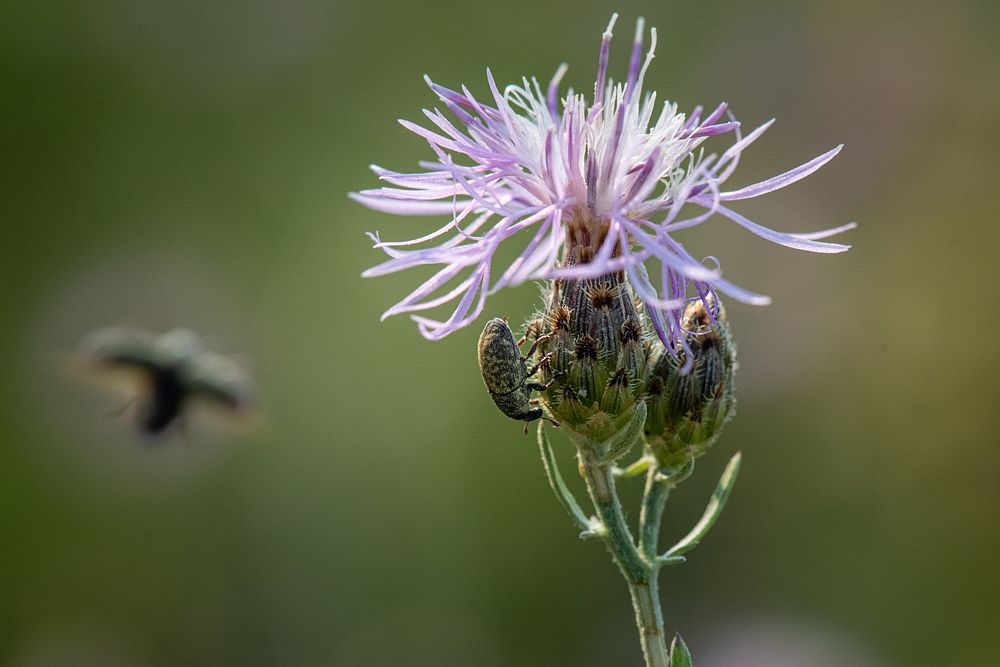
U.S. Department of Agriculture, USDA, Animal and Plant Health Inspection Service, APHIS, Plant Protection and Quarantine, PPQ, Montana State Plant Health Director Gary Adams observes an invasive weed and Larinus minutus, a knapweed seedhead weevil, one landing, and the other on it, searching for a place to lay their eggs on the Northern Cheyenne Reservation in Southeastern, MT, on July 16, 2021.
This is a beneficial biological control insect that leaves eggs in the flower bud of a local invasive species of weed. The larvae eat the seeds in the bud, reducing the seed production of the invasive weeds. Cattle do not like to eat weeds and the weeds use land, water, and soil nutrients that would otherwise be for the native vegetation. Some grasshopper species will feed on the invasive weeds while other species focus primarily on grasses. Grasshoppers significantly stress native grasses simply by eating some or all of the plant. The Cheyenne lease the land to ranchers who graze their cattle. For several years there has been a pest problem with grasshoppers. People's Partner for Community Development (PPCD) Community Facilitator Peggy Fredericks said, that there were so many that the ground would just hop. The plants were eaten down to just a stub. Last year, USDA APHIS PPQ was contacted for assistance. Adams was able to assist them in getting funding to suppress the grasshopper population that was eating away their forage plants. She says that they (USDA) got right on it, and approximately 50,000 acres of land were suppressed in a timely fashion. With APHIS's help, the natural rangeland plants grew back, and lease operations are set to continue in the fall. Because suppression was applied early, the grasshoppers were not able to mate and lay eggs, which greatly reduces the population for some more years. Suppression was kept away from residential areas, cropland, bodies of water, waterways, and any area that might produce health and safety concerns. Bees, butterflies, and similar insects are not significantly affected by the suppression. Adams says we intend to keep the stewards of the land, on the land. Especially our Tribal partners. USDA Photo by Lance Cheung. Original public domain image from Flickr